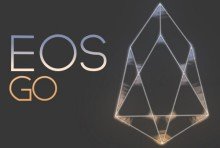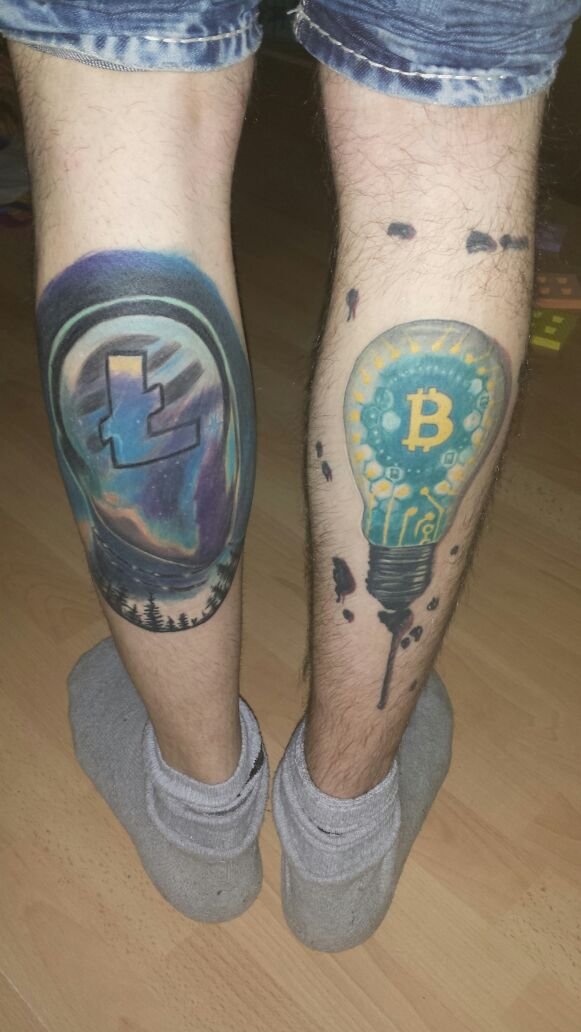EOS: Explanation of New BFT+DPoS w/ Daniel Larimer - Part 2 of 2
Daniel Larimer, CTO of block.one, goes more in depth to explain the new BFT-DPoS solution for EOS; he even compares the EOS implementation of BFT with another well-known implementation.
YouTube:
Part 2 shows Dan describing how DPoS/BFT in EOS will achieve 99.9% block finality in 0.5 seconds, with absolute finality every 2 seconds or better. This will allow dapps to provide a seamless user experience, a key step in bringing blockchain adoption to a wider audience.
Dan has another instructional video and an interview with EOS Go coming in the next few weeks.
EOS Go Admins: Kev, Bluejays
Editor in Chief: Jenny (@topkpop on steemit)
Thank you:
Daniel Larimer
Thomas Cox
block.one
Sam Sapoznick
Paul Atreides (Matt)

What is EOS Go?
We are dedicated to uniting the community towards launching EOS blockchain - as envisioned by block.one. We're bootstrapping this effort through Steemit with EOS Telegram Daily Summaries and other community updates.
If you're interested in helping with the launch of EOS public blockchain please get involved on the community forums and delegate Steem Power to our cause.
Telegram users can receive announcements for these daily summaries and other community updates here.
Thank you for your support. Go EOS!
▶️ DTube
▶️ IPFS
Honestly that explanation about TaPOS at the 8 minute mark is the most concise way I've ever seen Transactions as Proof-Of-Stake explained!
Just TaPOS alone is immensely powerful and so damn elegant in its simplicity!
Don't steal, don't lie, don't cheat, don't sell drugs. The government hates competition!
OMG! @fuckmylife - I love your username! ha ha and I agree! lmao 🤙
Thank you for the opportunity given to members to join the community forum. Good one there.
Thanks for this talk.
I have a follow-up question on transactions as proof of stake - what happens when you are on a fork and sign the transaction? Will it be invalid and not be applied? This may result in a loss of all the transactions that happen to be signed on forks.
And then, what is the expected fork rate on EOS? This would affect the amount of transactions that will be made invalid resulting in a worse user experience.
Dan is simply a genius, Bitshares and Steem revolutionized the world of blockchains and EOS is going to do it again
"Seamless user Experiences" Oh yeah that is what we needed to hear @rkz @unityeagle @pokerman this is what we need for the Blockie-Talkie to work in real time... OH exciting days Dawn 3.0 here we GO! thank you @eosgo
It's like I want to diversify, but really all I want to do is buy more EOS. I mean everytime I watch a video like this I just think @dan knows his stuff, he seems honest, genuine, and very smart. And he lays it out on the line, I've seen tons of videos online with him talking about BTS steem and EOS and everytime I'm impressed. Get some before June for sure, sooner is better probably
Dan's old BTS videos are so raw and genuine, he's now a little more refined in front of the camera but just as passionate and excitable.
This is our favorite of the two DPOS+BFT videos because it's easy to see how much Dan loves what he does, plus the belief he has in his efforts to change our world. Thank you @Dan for making these videos and go EOS!
Is the price of EOS a set price up until June?
nope, it's a top 10 coin right now
Honstly think Ethereum will outperform Bitcoin this year and EOS will likely outperform them both.
i have 5 EOS
Nice!
What i don't understand as neccesary is the 21 block producers. Why can't this be 210 block producers? I understand that much of it is about ensuring absolute best latency, to create the fastest blockchain, is there any other reason?
The problems here are two things: Centralization in wealth of the system as well as Centralization of nodes (I know this aspect is greatly debated, having to do with mining pools and all that).
To me this is the biggest issue with EOS, Steem and Bitshares. As a regulated system maybe it's fine, it will bend to regulation much more easily than other blockchain systems. There is plenty of room for success with this model, but I do think it is giving up on some of the most disruptive aspects of blockchain.
EDIT:
This is an honest question, i'd love some discussion around this if anyone has some insight.
Humans can only be reasonably expected to process the decision to vote for 21 different choices. I believe this is back by some scientific research. Not sure the source.
well definitely don't buy that. You don't need to vote for 21 of the nodes, votes are ultimately set by network stake anyway. So votes don't count 1:1 per person, and witnesses are elected by total vested voting weight.
Especially as EOS plans to be a much bigger network than steem, for all types of applications to be built on top of, it seems like this number of witnesses is an unnecessary restriction on the network.
Well I will try to explain at least what I think.
As you saw in the video you need 2/3 of producers in order to produce a irreversible block. In percentage terms 14/21 is the same as 140/210, but in the later you need to produce 140 blocks to reach this irreversible block with would be 10x slower. Also token holders would need to choose from a pool of 210 or so producers witch would take longer and harder to decide. So conclusion 21 looks like a good balance between decentralization, speed and consensus. My 2 cents.
Yeah, that is fair that it has a particular balance to it. Just don't think it is a good solution once the network gets gigantic. Maybe the backup witness model does account for that well enough.
Although, seems like EOS has gotten rid of paying the reserve witnesses? Not sure what would incentivise people to run a backup witness then.
Runner ups still get paid according to number of votes cast for them - so incentivizes continued campaigning. Should be profitable to run a reserve node.
https://github.com/EOSIO/eos/issues/1033
You only need 21 BP to be decentralized. More is just a waste of ressources according to Dans calculations. If we would want 42, we would need to put the inflation to 10%. Dan designed everything for optimum performance and the lowest inflation possible
No way would they need to increase the inflation rate, that is what I'm saying, nodes are going to be way way over payed.
Lets take the $10 billion marketcap we have right now. 5% of $10 billion = 500 million. 500 million divided by 21 = $23 million per year to run a node. That is at todays rate, with (our price with an unreleased product). People think EOS is gonna go way up in price (peraonally peraonally I think it's overvalued right now), so if EOS reaches >$100 nodes will be making over $100 million a year... Not really a good way to distribute wealth in a system in my opinion this is a big problem. If there were 42 nodes instead of 21 they would be making $50million a year to run a node. Still way too much.
This might make sense when there are multiple platforms being used by millions and millions of people. Until then this kind of price is ridiculous
Hi Solar, there are a couple of points I could maybe clarify here for you (I am from EOS UK Block Producer Candidate so we have asked a lot of similar questions).
The first point is that the 5% inflation is often incorrectly assumed to go to the 21 BP's but it does not all go to the 21 BPs.
It is split 3 ways.
It is split between the Worker Proposal Fund, the 21 BPs and the 100 Standby BPs.
Each Standy BP has to be able to take over at a moments notice and run a full read only node and to do this requires running a minimum of 10 dedicated machines, 4 full time staff, 2 x 15GB diversely routed connectivity, etc etc. The cost for running even the 121st standby Block Producer is well over 1M USD per annum.
This does not include any provision for the addition of the IPFS storage either which is still to be announced, and the network is going to have to scale massively once it goes live if it grows at an incredible rate as we all hope it will, once it is up and running.
Plus the security protection the nodes will require is going to be massive, as we expect that every hacker looking to make a name for themselves will be all over it looking for attack surfaces, especially during launch and the early days of the network, so you cannot under estimate costs for this equipment and skilled personal.
So in short it is going to be expensive to begin with, and more expensive as soon as it launches and then even more expensive as adoption grows! The good news though is that all BP candidates who are serious about doing a good job for the network (which we all are, because we're all EOS hodlers too!) are being transparent about their ownership and transparent about their plans and costs.
We intend to fully reinvest all Block Rewards into creating the most robust node humanly possible, for a long, long time, before we start diverting any profits into our community project (EOS University) and I am pretty sure all other BPs are of the same mind. We're finding the BP community, and the EOS community as a whole to be an amazing cross section of the global population who are all genuinely interested in doing the right thing for the good of the network and the good of humanity.
It's almost bizarre, but I think it comes with the territory, if you get as far as learning about EOS you have got there as a result of specific personal journeys that have peaked your interest in it enough to continue learning, and then you just like it more and more, the more you learn.
Anyway, I'm getting carried away now, I was only going to offer a couple of points but there we go! If I can help answer any other questions then please reach out to me.
We are very interested to know what questions the EOS hodler community want answered, because not only do we have to first launch the network on 3rd June 2018 to enable voting, we then have to get voted for!
So we think the best way to achieve this is to try and understand what the community wants to know the most, and then try to answer those questions as comprehensively and transparently as possible. So please, drown me in questions, everybody! :-)
Thanks for the reply, even on an old post. Glad to hear that the budget will be more nuanced than that. It's an exciting system, Even though it's strength is it's datacenter nodes, I still think this is it's weakest point as well.
What type of knowledge does it take to setup a node? Advanced server and networking it seems? And CS skills in the language EOS is written in to configure your node?